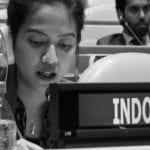In the Thick of Fear and Idea: Wither ASEAN Centrality?

Dedi Dinarto
Long before the discourse on the future of ASEAN centrality, S. Rajaratnam and Thanat Khoman have put their respective ideas on the ontological part of ASEAN, meaning that where ASEAN should depart on its characteristic, thus shape the way its interact at both internal and external level.
Rajaratnam pointed out that the long shadow of Cold War has shaped this region as the “states of fear” where every countries sought to defend themselves from external threat, and provide baseline to construct ‘common threat’. Given the situation of the escalating tension between Soviet Union and the United States, ASEAN chose to setback its activism not to show off their teeth instead of barricading Southeast Asia from the influx of communism influence.
On the other side, Thanat Khoman contrastively derived his idea on how to place the ideal and peaceful cooperation, given the framework to set aside the rising tension of konfrontasi of Indonesia and Malaysia, and other disputes between neighboring countries. He put that the ASEAN should represent a constitutive regime serving promise towards more cohesive, peaceful, and stable condition.
Between those two prominent views, it remains logical that ASEAN has produced 1967 Bangkok Declaration, Treaty of Amity and Cooperation (TAC), and Zone of Peace, Freedom, and Neutrality (ZOPFAN) pacts to achieve their objectives. In spite of departing from different views on ASEAN at the first place, these two ideas can be bridged under the framework of winning the security and stability of the region. Neither national interest nor external parties are regarded crucial at that time.
Reflecting from the event of historical sociology between Rajaratnam and Thanat Khoman provides us the outlook of how ASEAN is able to determine its centrality.
However, it should be admitted that the composite interaction between ASEAN member states and its strategic partners nowadays has pushed political scientists and practitioners to look at ASEAN not only as a unproblematic regional body, but as a constructive and flexible pivot amidst tricky surroundings.
This is the matter of how we think about ‘ASEAN Centrality’ as an idea, which implies the source of power of ASEAN as a regional body. The governmentality has proceed to far serving the elites’ interest which surrounded by state-centric approach and calculation.
Not to do away from the dominant discourse, the elites could provide breakthrough creating intensive and fruitful cooperation on more human-centric issues. Negotiating major countries in the region to cooperate in non-traditional security issues that are quite transnational and require high and strict coordination and control mechanisms. Giving the example in how to attract China to aware on the issue of disasters and marine safety, and terrorism in the region would shed light on.
Therefore, this reflective approach underpin the way on how ASEAN member states could define their interests based on human-centric prioritization, and thus put up those issues to the responsibility of strategic partner countries. By doing this way, ASEAN can find its centrality amidst the complexities of international politics in the region. In other words, the centrality must be seen as a phenomenon coherent to change and intersubjective configuration.
Dedi Dinarto is a research assistant at ASEAN Studies Center, Faculty of Social and Political Sciences, Universitas Gadjah Mada.




